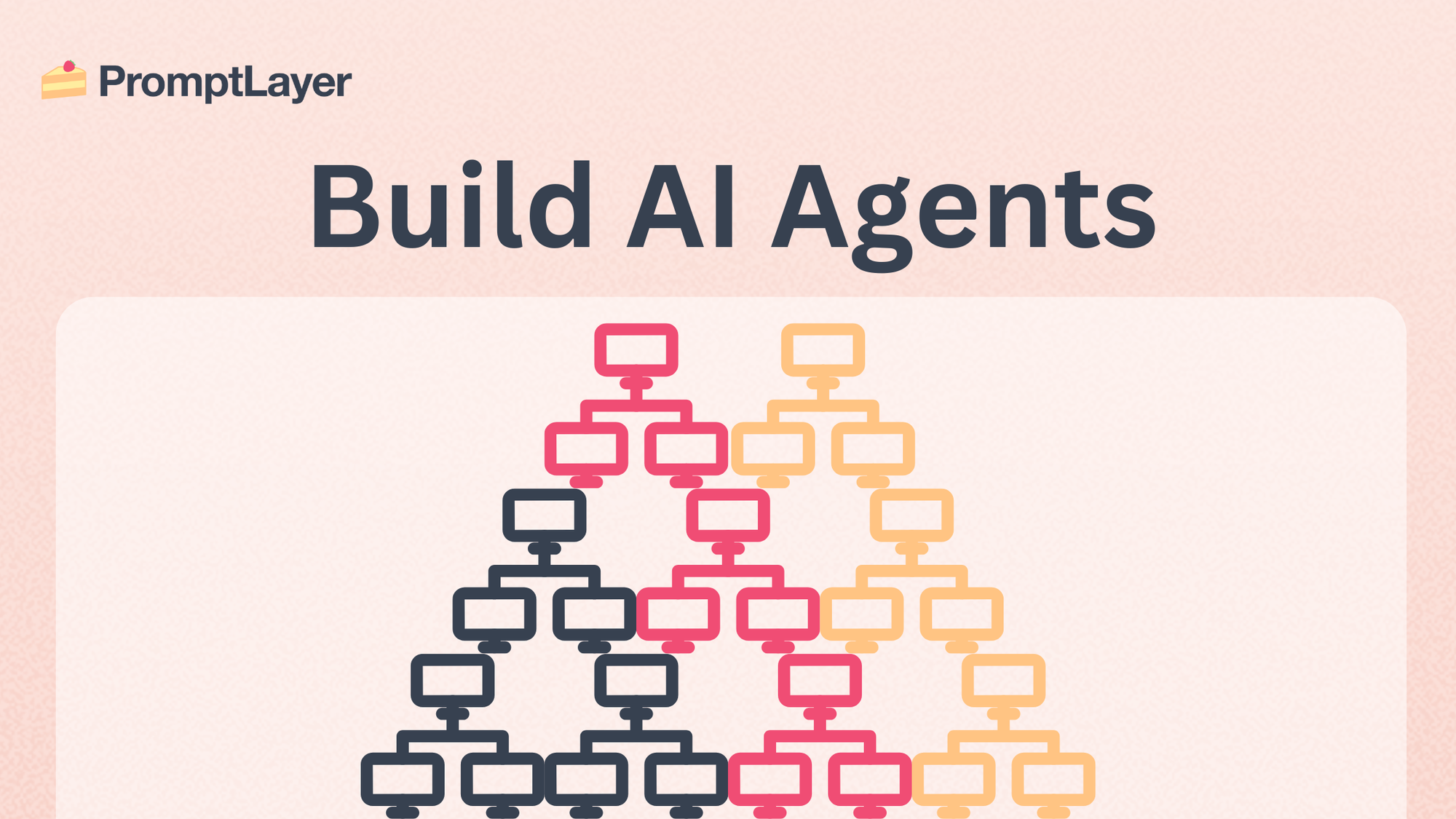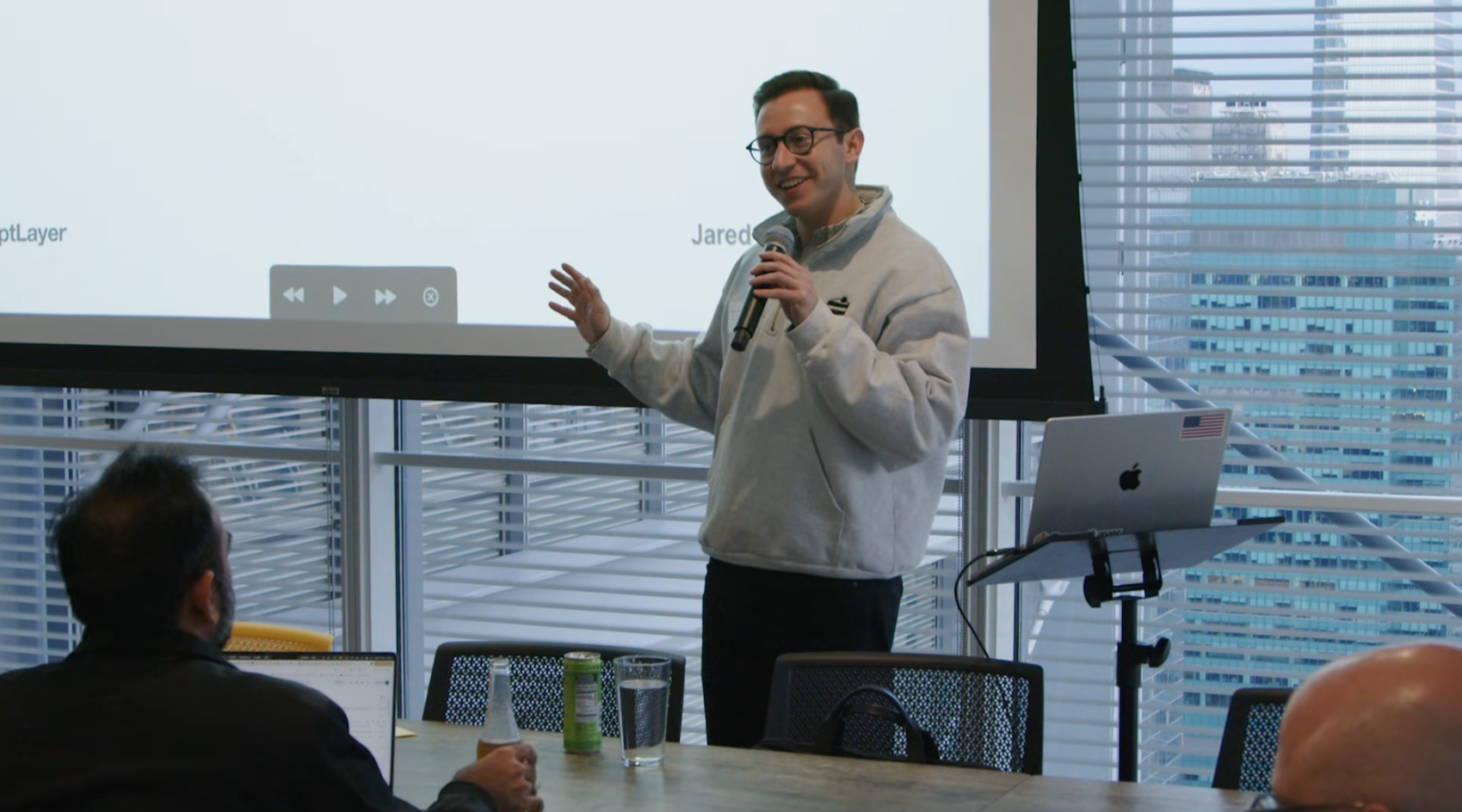What are the Top Agentic Frameworks? A guide to AI Agents

Table of Contents:
- What are Agentic Frameworks?
- Agentic and Agent Definition
- Agentic Framework Key Features
- AI Agents vs LLMs
- Top Agentic Frameworks
- AI Agent Comparisons
- Use Cases and Applications of Agentic Frameworks
Introduction to Agentic Frameworks
Agentic frameworks are tools for developing AI systems capable of autonomy, self-directed workflows, and decision-making. Understanding the main terms around agentic frameworks, their use cases, and the top frameworks will help you as these systems become more mainstream.
Define: What Does Agentic Mean in AI?
In AI, agentic refers to autonomous systems with decision-making capabilities and the ability to manage workflows. An agentic AI operates independently and adapts based on context, reasoning, and goals without human supervision. They executing tasks, plan, and strategize.
PromptLayer is specifically designed for capturing and analyzing LLM interactions. Providing insights into prompt effectiveness, model performance, and overall system behavior.
With PromptLayer, your team can access:
- Prompt Versioning and Tracking
- Performance Monitoring
- Cost Analysis
- Error Detection and Debugging
- Frontier LLMs
Build agents and manage prompts with your whole team. Get started here.
Key Features of Agentic Frameworks
- Pre-built Components and Abstractions: Agentic frameworks offer modular building blocks for creating of AI agents. Including design patterns, workflows, and guidelines that reduce setup time and simplify development.
- Tool Integration: Agentic frameworks allow agents to interact with external tools, databases, APIs, and more. This allows access to important features like real-time data, web searches, code execution.
- Memory Management: Effective memory systems are important for allowing agents to retain context from past interactions. This allows for long-term task execution and continuity.
- Multi-Agent Collaboration: Agentic frameworks can support multiple agents working together. They can specialize in a specific subtask within a larger project.
- Planning and Reasoning: Within these frameworks agents can plan out goals and sub-goals. They can then sequence actions, identify obstacles, and adapt workflows.
- Monitoring and Debugging Tools: Built-in tools for monitoring and debugging help for reliability. These features track tasks, troubleshoot issues, and monitor outputs.
- Governance and Safety: Agentic frameworks ideally include safety features. These can help with ethical AI operation, data security, and compliance with regulations.
AI Agents vs LLMs
AI agents are built on top of LLMs and offer capabilities that extend beyond the capabilities of LLMs. With connections to various data sources, tools, and decision making, AI agents offer functionality that LLMs alone cannot match. An example would be a LLM can generate text based on a query, whereas an AI agent can take the generated output, analyze additional data, and perform a sequence of actions to complete a broader objective or task.
Top Agentic Frameworks
PromptLayer Workflows
PromptLayer Workflows let you quickly build, launch, and manage AI agents that use multiple LLMs and business rules. You can create and test these AI systems easily using a visual drag-and-drop tool, and then deploy them without needing to worry about complex infrastructure management.
Microsoft AutoGen
An open-source framework for multi-agent AI systems for complex tasks. Allows for agent-to-agent communication, task delegation, and tool integration. Agents can independently execute code and retrieve real-time data. Includes features supporting autonomous and human-in-the-loop interactions.
LangChain
A modular framework for building LLM-driven agents capable of complex task workflows. Supports prompt chaining, memory management, and tool integration. Enables multi-step tasks, data source connections, and adaptable agent functions for dynamic applications.
Hugging Face Transformers Agents 2.0
An open-source framework for agent-based AI workflows and complex tasks. Supports dynamic tool-calling, task-specific adaptability, and secure code execution. Agents can perform data retrieval and real-time code execution for high-performance applications across domains.
Swarm by OpenAI
An experimental framework for lightweight multi-agent orchestration. Supports dynamic task handoffs, agent coordination, and execution control. Ideal for managing complex workflows requiring real-time agent collaboration and task delegation.
MetaGPT
An open-source framework for multi-agent collaboration on structured tasks. Assigns specific roles to agents, such as product manager or engineer, to simulate a coordinated software team. Agents handle tasks like competitive analysis and code generation, with SOP-based workflows for efficient project execution.
CrewAI
An open-source framework for role-based, collaborative multi-agent systems. Supports autonomous decision-making, task allocation, and inter-agent communication. Agents can fulfill roles like research or data analysis, making it ideal for applications requiring efficient task distribution.
Camel
An open-source framework for collaborative, role-based AI agent systems. Enables agents to take on specific roles and simulate cooperative human-like interactions. Ideal for applications requiring detailed coordination, contextual understanding, and task management across multiple agents.
OpenAGI
An open-source AGI research platform for handling multi-step, complex tasks. Integrates different models, dynamic model selection, and tool integration. Uses task feedback to self-improve, supporting advanced AGI research and experimentation.
Flowise
An open-source, low-code platform for building AI-driven workflows. Offers a drag-and-drop interface, pre-built templates, and extensive integration options. Ideal for quickly creating and deploying LLM applications without advanced programming skills.
Top AI Agent Framework Comparisons
| Framework | Key Capabilities | Features | Primary Use Cases | Distinctive Benefits |
|---|---|---|---|---|
| Microsoft AutoGen | Multi-agent orchestration, real-time data retrieval, task delegation, autonomous & human-in-the-loop interactions | Agent-to-agent communication, tool integration, code execution, supports autonomy and human interaction | Complex task automation, data-driven applications, autonomous and semi-autonomous workflows | Strong real-time data handling, combines autonomy and human guidance |
| LangChain | LLM-driven task workflows, memory management, tool integration | Prompt chaining, memory handling, modular architecture, tool connection | Dynamic applications, adaptable multi-step tasks, data source integrations, agent adaptability | High adaptability, especially in tasks with changing data and decision flows |
| Hugging Face Transformers 2.0 | High-performance workflows, task-specific agents, secure code execution, real-time data and code interaction | Tool-calling, task-specific adaptability, security-focused execution, model access across domains | Cross-domain workflows, high-computation tasks, applications needing model agility and safe execution | Task-specific adaptability, secure execution enhances safety in high-stakes applications |
| Swarm (OpenAI) | Lightweight multi-agent orchestration, task handoffs, real-time agent collaboration | Dynamic task assignment, agent coordination, control over task execution | Real-time collaboration tasks, complex workflows requiring coordinated agent activity | Lightweight, ideal for rapidly changing tasks and real-time decision-making |
| MetaGPT | Multi-agent collaboration with role-based tasking, structured and coordinated team simulation | Role assignment (e.g., PM, Engineer), SOP-based workflows for task handling | Software development, competitive analysis, and project-oriented workflows | Structured teamwork simulation with specific roles, helpful for collaborative development |
| CrewAI | Role-based collaborative multi-agent system, decision-making automation, inter-agent task allocation | Role-specific task execution (e.g., research, analysis), supports inter-agent communication | Research-oriented applications, large data processing, projects needing efficient task distribution | Strong for role-based workflows; facilitates inter-agent knowledge sharing and task alignment |
| Camel | Collaborative AI agents with human-like interaction simulation | Role-based coordination, contextual understanding, task management | Complex project management, task workflows needing nuanced communication and contextual understanding | Cooperative agent behavior, enhanced contextual processing |
| OpenAGI | Multi-step task handling, model integration, dynamic selection, self-improving feedback loops | Model integration, tool-based task handling, advanced AGI research setup | Advanced AGI research, long-term experimentation, complex task decomposition | Supports AGI experimentation, with adaptable model use based on task feedback |
| Flowise | Low-code AI-driven workflow creation, drag-and-drop interface, quick deployment for LLM apps | Drag-and-drop UI, pre-built templates, integration-friendly | Rapid application deployment, non-technical LLM integrations, workflow automations | Simplifies AI deployment with a low-code approach, great for prototyping or quick execution |
Use Cases and Practical Applications of Agentic Frameworks
Agentic frameworks can perform a broad range of tasks across a lot of industries. Automation with these agent frameworks are used to complete sets of tasks and make decisions on behalf of people. Here are some examples:
- Customer Service and Support: By autonomously managing customer inquiries, agents can reduce ticket resolution times and offer fast, multilingual support.
- Healthcare Operations: Automation of healthcare tasks like claims processing and prior authorizations can be streamlined with agents autonomously validating rules.
- Finance and Fraud Detection: In finance, agents can monitor transactions in real time to detect and prevent fraud. They can also complete high-frequency trading tasks using market data.
- Manufacturing and Supply Chain: Predictive maintenance powered by agentic frameworks schedules repairs to minimize downtime, while logistics applications leverage real-time data—such as traffic and weather—to optimize delivery routes.
- Human Resources and Talent Acquisition: Resume screening and employee query responses can be managed autonomously to shorten recruitment cycles.
- Smart Homes and IoT Management: In smart homes, autonomous systems can control energy usage, manage security, and adjust settings based on user habits.
- Autonomous Vehicles and Robotics: In autonomous vehicles, agents can continuously process environmental data and make real-time adjustments for better navigation.
- Content Creation and Marketing: Agents can manage marketing campaigns by analyzing user data, refining strategies, and creating personalized content.
Conclusion
Agentic frameworks play an important role in AI's evolution. They can handle autonomous workflows and decision-making processes in a way computers haven't before. These frameworks give us the tools for AI agents to operate independently, strategize, and execute complex tasks, and you can build with them right now.
As AI becomes more integral in our lives, understanding and building agentic systems will be commonplace. The frameworks highlighted here represent the first steps towards a world where we have autonomous AI agents helping us with an array of jobs.
About PromptLayer
PromptLayer is a prompt management system that helps you iterate on prompts faster — further speeding up the development cycle! Use their prompt CMS to update a prompt, run evaluations, and deploy it to production in minutes. Check them out here. 🍰



